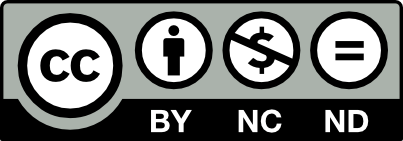This page is licensed under Creative Commons under Attribution 4.0 International. Anyone can share content from this page, with attribution and link to College MatchPoint requested.
Two Chances, One Application: Making the Most of Your Second-Choice Major at UT Austin
At The University of Texas at Austin, what you list as your second-choice major is not just a backup plan. It is a real part of your application strategy. In fact, for many students who are not automatically admitted through the top 5% rule, that second-choice major could be the difference between an offer and a denial.
But it only works if you approach it with intention. UT does not view the second-choice major as a throwaway. It still gets reviewed through the same holistic process. If you choose it wisely and align your application materials accordingly, it can open another door into one of the most competitive public universities in the country.
Here’s how to make your second-choice strategy work.
Understand How UT Uses Second-Choice Majors
When you apply to UT Austin, you are required to select a first-choice major and have the option to list a second. Each major has its own level of competitiveness. Programs like Business, Computer Science, and Nursing are especially selective. Many applicants to these majors are strong students, but not all are admitted.
That is where the second-choice major comes in. If UT sees you as a strong candidate, but your first-choice major is full or not a great fit, they will review you for your second choice. And they take it seriously. Last cycle, we saw multiple students offered admission to their second-choice major when their first was at capacity.
But not just any second-choice major will do.
Choose a Second Choice You Can Genuinely Support
Avoid the temptation to list something random just because you think it might be easier to get into. UT wants to see a coherent application. If your first choice is Engineering and your second is Psychology, you will need to explain the connection. Otherwise, the second-choice pick can weaken your overall narrative.
The best strategy is to choose a second major that still connects to your interests, strengths, or long-term goals. For example, a student applying to McCombs might list Economics or Government. A student aiming for Computer Science might list Mathematics. These pairings make sense academically and can still lead to similar career paths.
Make sure your essays and resume include at least one sentence that helps admissions reviewers understand why that second choice is also a fit.
Align Your Materials with Both Choices
If you list a second-choice major, treat it with the same respect as your first. Your expanded resume should reflect activities or coursework that align with both options. Your short answer essays can briefly mention your interest in each and how both relate to your academic curiosity or future plans.
Even a few well-placed sentences can signal intentionality. You might write, “While my primary interest is in public health, I have also explored biology through summer research and would be excited to pursue that path as well.” This small detail shows flexibility and preparation.
Holistic reviewers appreciate when students show depth, but also a broader academic outlook. If you are applying to a highly selective first-choice major, your second choice is an opportunity to show that you are still a strong fit for UT—even if that path looks a little different.
When to Use the Second-Choice Strategy
The second-choice strategy is especially important for students who are not in the top 5 percent. If you are applying through holistic review, and you know your first-choice major is highly competitive, listing a second choice is smart. It expands your options and gives the admissions team another lens through which to evaluate your readiness.
It is also useful for students who have intersecting interests. If you enjoy both communication and business, or both biology and psychology, the second-choice option can be a way to keep both paths open.

The Right Support for UT Austin Success Starts Here
For 16 years, we’ve helped students successfully navigate the competitive UT Austin admissions process. Our students are admitted at significantly higher rates than the general applicant pool because we know what UT is looking for—and how to help students deliver it. From the expanded resume to the short-answer essays, every detail matters. Our expert coaches guide students step by step, helping them craft a cohesive, major-aligned application that tells a clear and compelling story. If your student is serious about UT Austin, this is the kind of focused support that can make the difference.
Start with a free one-on-one coaching session to give your student a clear plan and a real advantage.


